You can use crushed oyster shells to create sharp physical barriers that deter slugs and snails from crossing into your garden beds. The shells’ alkaline properties raise soil pH, making the environment hostile to nematodes, root grubs, and wireworms that prefer acidic conditions. Apply them in protective rings around vulnerable plants and bulbs for targeted defense. The calcium carbonate strengthens plant cell walls while creating long-lasting ground coverage that discourages rodent digging. These methods offer extensive protection strategies you’ll want to master.
Sharp Texture Creates Physical Barriers Against Slugs and Snails
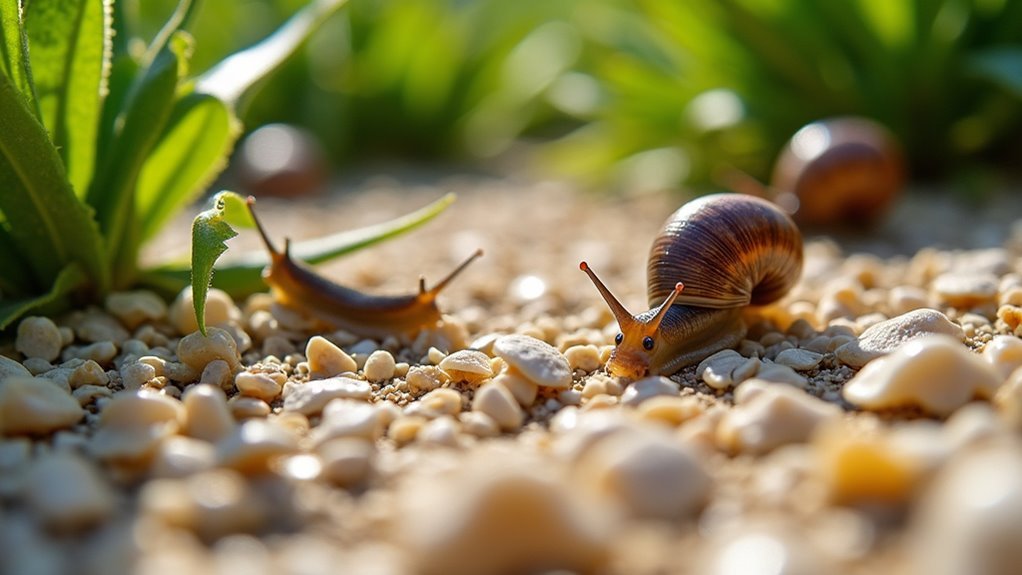
Slugs and snails wreak havoc on garden plants, but crushed oyster shells create an effective physical barrier that stops these soft-bodied pests in their tracks. The sharp, abrasive texture makes it uncomfortable for slugs and snails to crawl across, deterring them from reaching your vulnerable plants.
When you scatter crushed oyster shells around your garden beds, you’re creating rough terrain that these pests won’t want to cross. Their soft bodies can’t handle the jagged surface, making it an excellent natural deterrent.
Unlike chemical solutions, this method provides immediate protection without harming beneficial insects or soil organisms. The shells maintain their effectiveness even after rain, offering consistent defense against slug and snail infestations throughout the growing season.
Alkaline Properties Deter Soil-Dwelling Pests
While the sharp texture of crushed oyster shells creates an obvious physical deterrent, their alkaline properties work beneath the surface to discourage soil-dwelling pests that prefer acidic environments. When you incorporate oyster shells into your garden soil, you’re raising the pH level, making conditions uncomfortable for nematodes, grubs, and other harmful organisms that thrive in acidic conditions.
| Pest Type | Preferred pH | Oyster Shell Effect | Control Result |
|---|---|---|---|
| Nematodes | 5.5-6.5 | Raises pH to 7+ | Significant reduction |
| Root Grubs | 5.0-6.0 | Creates alkaline barrier | Natural deterrent |
| Wireworms | 5.5-6.5 | Hostile environment | Population decline |
| Cutworms | 6.0-6.5 | pH disruption | Behavioral changes |
This natural pest control method transforms your soil chemistry while maintaining ecosystem balance.
Protective Perimeters Around Vulnerable Plants and Bulbs
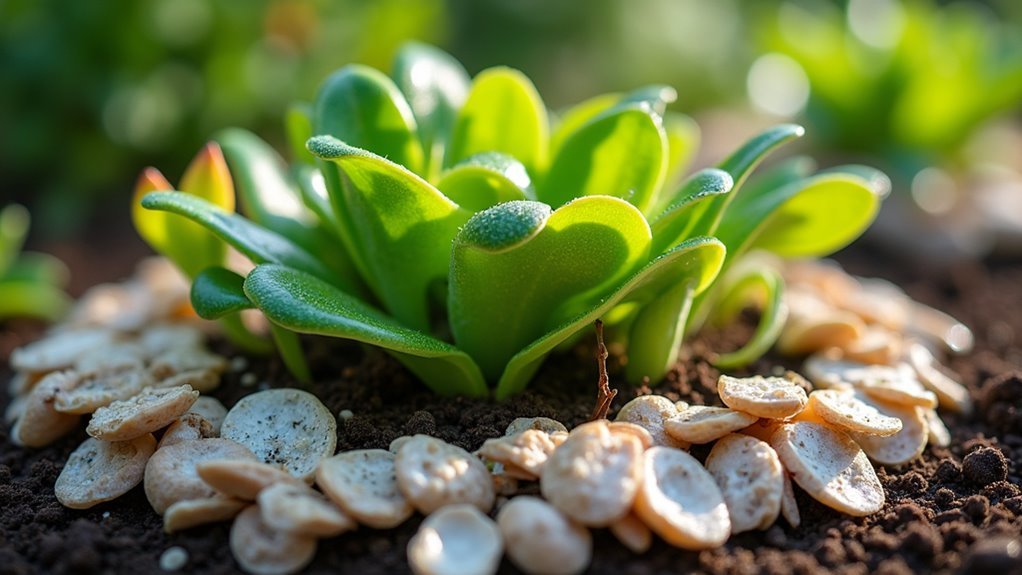
Creating a protective ring of crushed oyster shells around your most vulnerable plants transforms these calcium-rich fragments into an effective fortress against crawling pests.
You’ll find this method particularly effective for protecting bulbs and tender seedlings from slugs and snails. The sharp, abrasive texture makes it nearly impossible for soft-bodied pests to cross the barrier without injury.
The jagged edges of crushed oyster shells create an impenetrable barrier that deters slugs and snails from reaching precious plants.
When applying oyster shells as protective bands, scatter them in a 2-3 inch wide circle around each plant’s base.
However, you’ll need to exercise caution with acid-loving plants like blueberries and azaleas, as the alkaline nature of these shells can alter soil pH unfavorably. For these sensitive species, consider alternative pest control methods to avoid compromising their health.
Natural Calcium Boost Strengthens Plant Defense Systems
Beyond their physical barrier properties, crushed oyster shells deliver a powerful calcium carbonate boost that fortifies your plants from within. This natural calcium source strengthens plant cell walls, enhancing overall vigor and making your garden more resilient against pest attacks.
You’ll notice healthier plants with improved root development and better nutrient uptake, creating robust plant defense systems that naturally resist diseases and infestations.
The slow-release calcium provides sustained benefits throughout the growing season, supporting long-term plant health.
As an alkaline amendment, crushed oyster shells can adjust soil pH when needed, creating ideal conditions for plants that thrive in slightly acidic environments. This pH balance further strengthens their natural resistance to garden pests while promoting vigorous growth and enhanced defensive capabilities.
Long-Lasting Ground Coverage That Discourages Rodent Digging
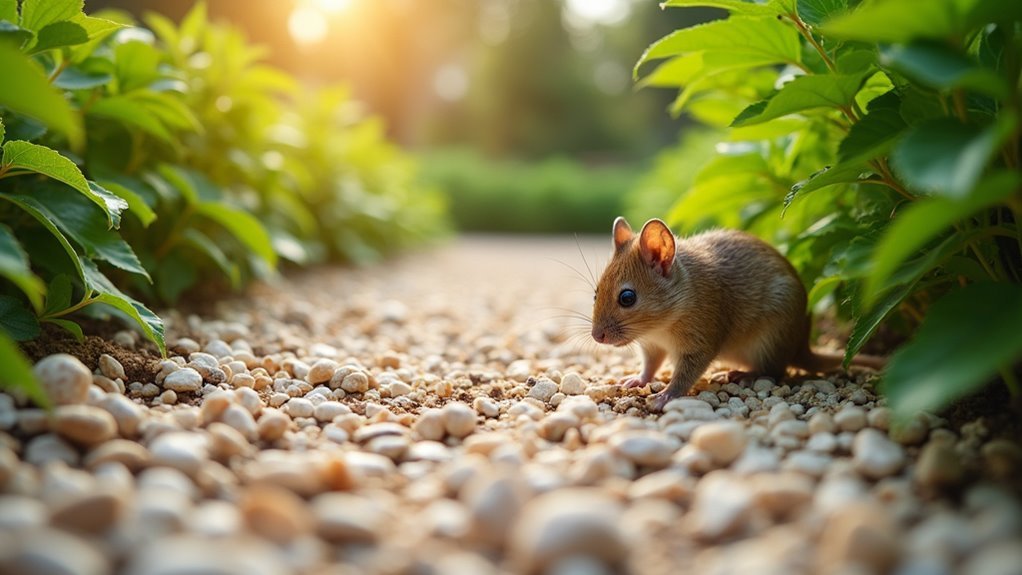
One of the most effective long-term solutions for protecting your garden involves creating a protective ground layer that rodents find impossible to navigate. Crushed oyster shells form sharp, abrasive barriers that discourage voles and mice from digging near your vulnerable plants and bulbs. You can purchase these shells from your local garden center and spread them around targeted areas for immediate protection.
| Application Method | Coverage Area | Durability | Effectiveness |
|---|---|---|---|
| Surface layer | 2-3 inch depth | 2-3 seasons | High deterrent |
| Mixed with soil | Garden beds | 3-4 seasons | Maximum protection |
| Perimeter barrier | Border zones | 1-2 seasons | Moderate deterrent |
| Bulb planting | Individual holes | 4-5 seasons | ideal defense |
This long-lasting coverage considerably reduces bulb loss while improving soil aeration.
Frequently Asked Questions
Are Crushed Oyster Shells Good for Tomato Plants?
You’ll find crushed oyster shells beneficial for tomato plants since they provide calcium carbonate, balance soil pH, improve drainage, and deter slugs. However, you should test your soil’s pH first before applying them.
What Plants Like Crushed Oyster Shells?
You’ll find that blueberries, hydrangeas, beans, broccoli, and squash thrive with crushed oyster shells. They’ll improve your soil’s structure, drainage, and pH while boosting flowering plants’ bloom quality and overall garden productivity.
How to Use Oyster Shells in Your Garden?
You can scatter crushed oyster shells around vulnerable plants to create pest barriers, mix them into planting soil for nutrients, or form protective rings around specific plants like lilies.
Will Crushed Oyster Shells Deter Slugs?
You’ll find crushed oyster shells effectively deter slugs by creating an uncomfortable, sharp barrier they won’t cross. The abrasive texture makes it difficult for slugs to reach your vulnerable plants naturally.
In Summary
You’ve discovered a powerful, natural solution that’ll transform your garden defense strategy. Crushed oyster shells offer multiple layers of protection – from creating painful barriers for soft-bodied pests to strengthening your plants’ natural immunity. You’re not just adding one-time pest control; you’re investing in long-term garden health. Spread these shells around your most vulnerable plants, and you’ll watch your pest problems disappear while your garden thrives naturally.

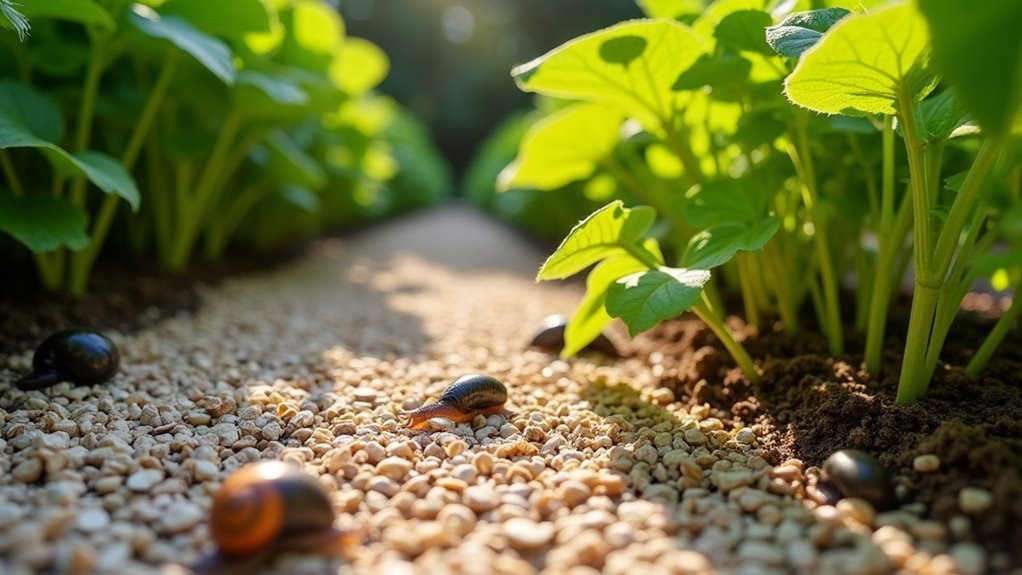
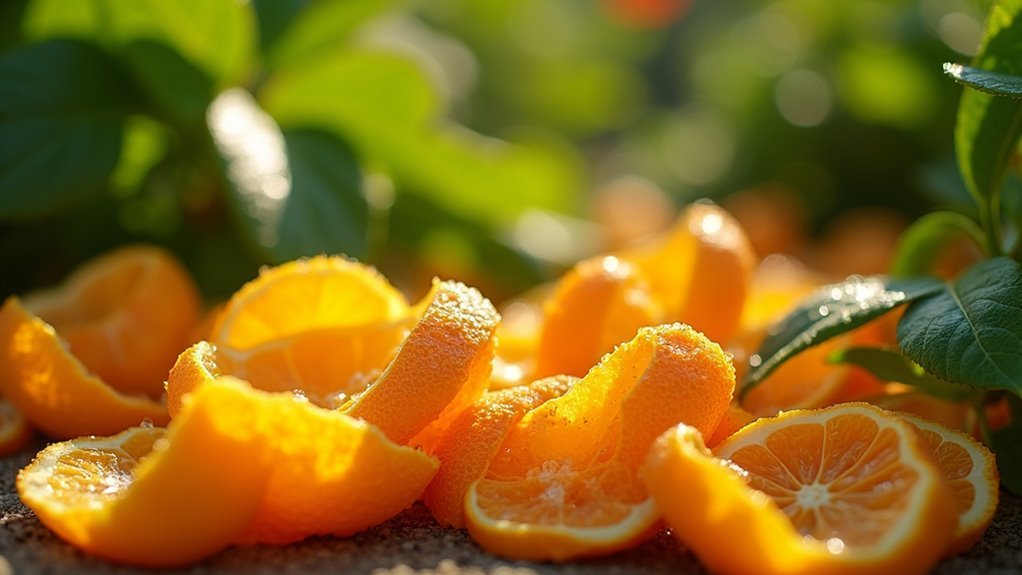
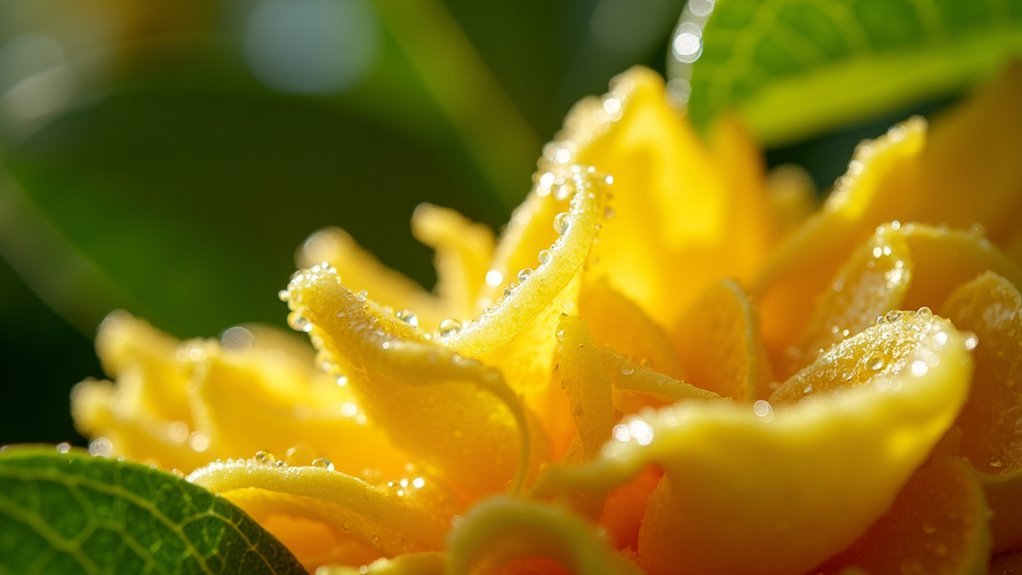

Leave a Reply